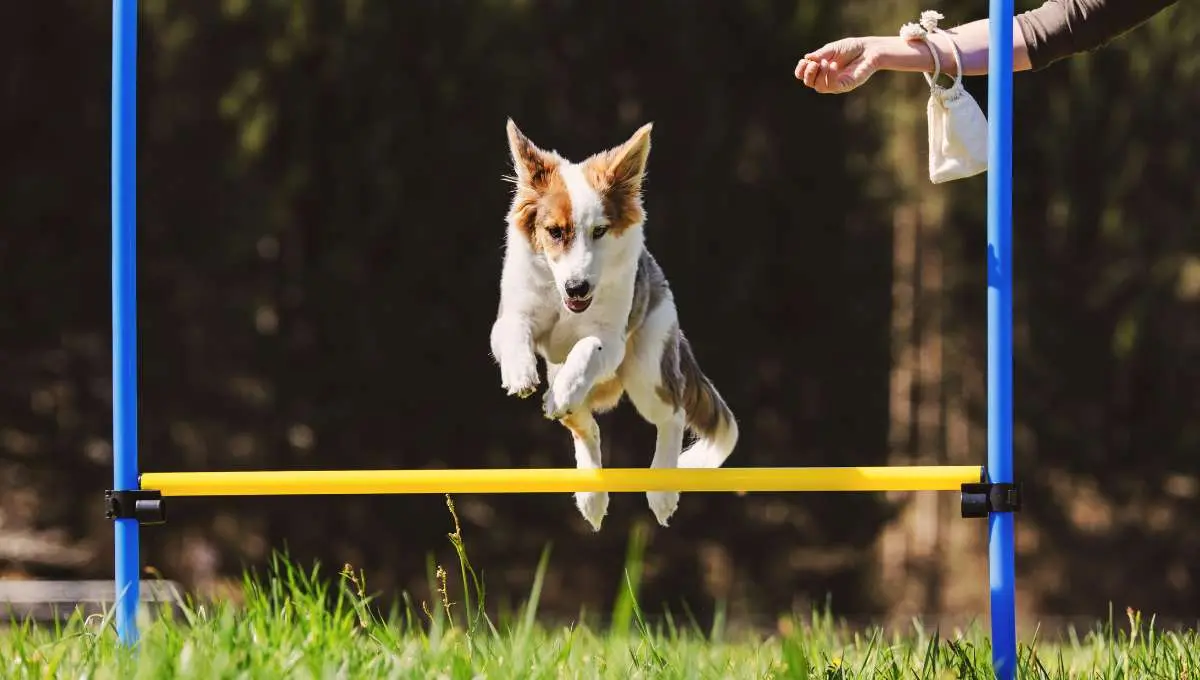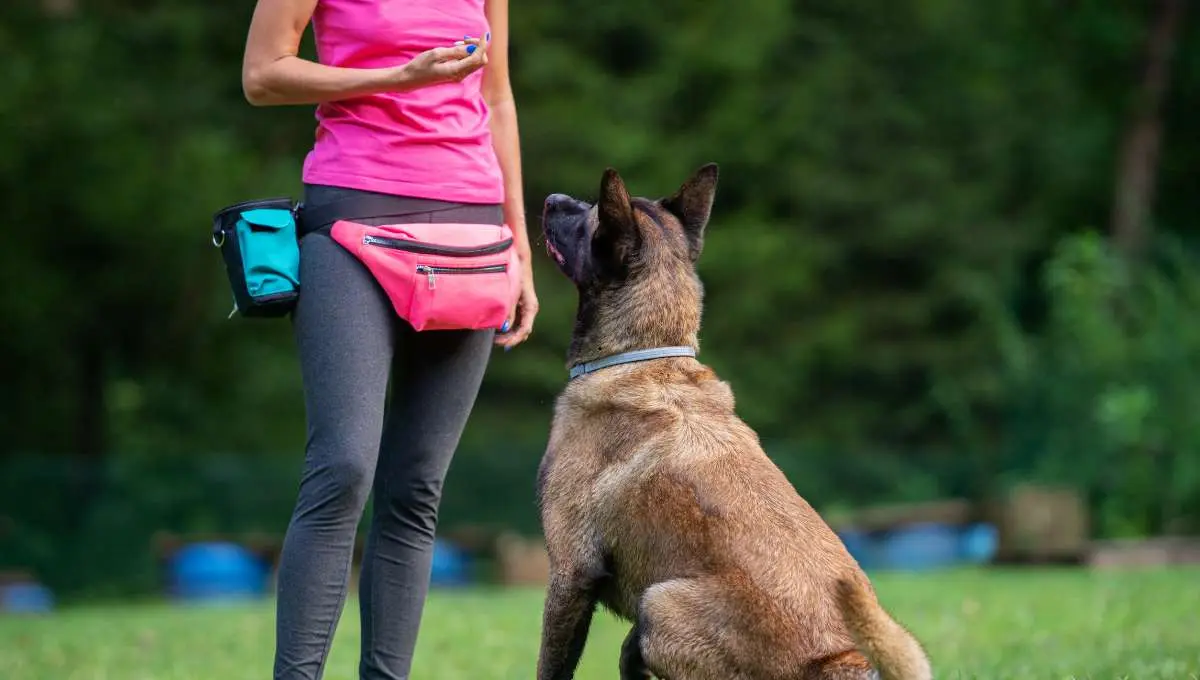Agility training is a popular activity for dogs and their owners. It involves guiding your dog through an obstacle course, with the goal of completing the course as quickly and accurately as possible. While it can be a fun and exciting activity for dogs, it also offers a range of benefits that can help improve their overall health and well-being.
One of the most significant benefits of agility training is enhanced physical fitness. The obstacle course requires dogs to run, jump, and climb, which can help improve their cardiovascular health, build muscle, and increase their endurance.
Further, agility training can provide mental stimulation and cognitive benefits, as dogs must learn to navigate the course and make quick decisions. This can help improve their problem-solving skills and overall cognitive function.
Key Takeaways
- Agility training can enhance a dog’s physical fitness and provide mental stimulation and cognitive benefits.
- It can also help to strengthen the bond between a dog and their owner.
- Agility training can be tailored to specific goals and provide long-term health benefits for dogs.
Enhanced Physical Fitness
As a dog owner, you want your furry friend to be healthy and active. Agility training is an excellent way to achieve this goal.
Here are some of the ways agility training can enhance your dog’s physical fitness:
Improved Cardiovascular Health
Agility training involves running, jumping, and other physical activities that require your dog to use its cardiovascular system. Regular training sessions can improve your dog’s heart health, increase blood flow, and reduce the risk of heart disease.

Increased Strength and Flexibility
Agility training can help your dog build strength and flexibility. When your dog jumps over hurdles or runs through tunnels, it engages its muscles, which can lead to increased strength and flexibility over time.
Better Coordination and Balance
Agility training requires your dog to navigate obstacles quickly and accurately, which can improve its coordination and balance. As your dog becomes more skilled at agility training, it will learn to move its body in new and challenging ways, which can help it avoid injury and move with greater ease in everyday life.
Overall, agility training is an excellent way to enhance your dog’s physical fitness and improve its overall health. By incorporating agility training into your dog’s routine, you can help it stay active, healthy, and happy for years to come.
Mental Stimulation and Cognitive Benefits
Agility training is not only beneficial for a dog’s physical health but also for their mental well-being. Engaging in agility training can provide mental stimulation that challenges a dog’s cognitive abilities, preventing boredom and destructive behaviors caused by a lack of mental stimulation.
Reduced Behavioral Problems
From my experience, I have seen agility training can help reduce behavioral problems such as excessive barking, digging, and chewing. This is because agility training provides an outlet for a dog’s energy and helps them learn impulse control. It can also improve a dog’s overall obedience skills, which can lead to better behavior at home and in public.

Increased Focus and Attention
Agility training requires a dog to focus and pay attention to their handler’s commands while navigating through an obstacle course. This can help improve a dog’s focus and attention, which can translate to other areas of their life, such as during walks or while playing with their owner.
Enhanced Problem-Solving Skills
Agility training can also enhance a dog’s problem-solving skills. Agility courses require dogs to make quick decisions and adjust their movements accordingly. This can help improve a dog’s problem-solving skills and their ability to think on their feet.
Additionally, agility training can help a dog learn to navigate new environments and situations with confidence, which can be beneficial in everyday life.
Overall, agility training can provide numerous mental and cognitive benefits for dogs. It can help prevent behavioral problems, improve focus and attention, and enhance problem-solving skills.
Strengthened Human-Dog Bond
As a dog owner, one of the most important aspects of dog training is building a strong bond between you and your furry friend. Agility training is an excellent way to strengthen the human-dog bond, as it requires teamwork and cooperation between the handler and their dog.
Improved Communication
Agility training involves a lot of verbal and nonverbal communication between the handler and the dog. The handler needs to give clear and concise commands to the dog, while the dog needs to be able to read the handler’s body language and respond accordingly. This type of communication is essential for building a strong bond between the two, as it allows for better understanding and trust.

Trust Building
Agility training also helps to build trust between the handler and the dog. In order to successfully complete an agility course, the dog needs to trust that the handler will guide them in the right direction and keep them safe.
Likewise, the handler needs to trust that the dog will follow their commands and not get distracted. This mutual trust is crucial for a strong human-dog bond and can carry over to other areas of the dog’s life, such as obedience training and general behavior.
In conclusion, agility training is an excellent way to strengthen the bond between a dog and their owner. It improves communication, builds trust, and provides a fun and rewarding activity for both parties.
Increased Safety and Control
Agility training can help increase safety and control over your dog. By training your dog to navigate through obstacles, you can teach them to be more aware of their surroundings and become more responsive to your commands. This can help prevent accidents and keep your dog safe.
Reliable Recall
One of the most important benefits of agility training is that it can help improve your dog’s recall. A reliable recall is essential for keeping your dog safe, especially when they are off-leash. Through agility training, your dog will learn to respond to your commands quickly and reliably, making it easier to call them back to you in case of an emergency.
Effective Response to Commands
Agility training can also help improve your dog’s response to commands. By teaching your dog to navigate through obstacles, you are also teaching them to be more responsive to your commands. This can be especially helpful in situations where you need your dog to respond quickly, such as when crossing a busy street or encountering other dogs on a walk.
Overall, agility training can help increase safety and control over your dog, making it a valuable training tool for any dog owner.

Agility Training for Specific Goals
As an owner, you might have specific goals in mind when it comes to agility training for your dog. Two common goals are preparation for dog sports and rehabilitation/conditioning.
Preparation for Dog Sports
If you’re interested in competing in dog sports such as agility trials, then agility training is an excellent way to prepare your dog. Dog agility competitions involve a course with various obstacles such as tunnels, jumps, and weave poles. By training your dog in agility, you’ll be helping them become familiar with these obstacles and build their confidence in navigating them.
To prepare for dog sports, it’s important to set specific training goals that align with your dog’s abilities and aspirations. For example, you might start with basic agility training exercises such as jumping over low hurdles and crawling through tunnels. As your dog becomes more comfortable with these exercises, you can gradually increase the difficulty level.
Rehabilitation and Conditioning
Agility training can also be beneficial for dogs that are recovering from an injury or surgery. By incorporating agility exercises into their rehabilitation program, you can help your dog regain strength, flexibility, and coordination. Agility training can also be an effective way to prevent future injuries by building your dog’s overall fitness level.
When designing an agility training program for rehabilitation and conditioning, it’s important to work closely with your veterinarian or a certified canine rehabilitation specialist. They can help you develop a customized program that takes into account your dog’s specific needs and limitations. It’s also important to start slowly and gradually increase the difficulty level as your dog progresses.
Long-Term Health and Quality of Life
Agility training is not only a fun activity for dogs but also has long-term health benefits. According to a study published in the Journal of Veterinary Behavior, agility training can help improve a dog’s cardiovascular fitness, body condition, and overall health.
Agility training involves a lot of running, jumping, and climbing, which can help improve a dog’s endurance, strength, and flexibility. This type of exercise can also help prevent obesity, which is a significant health concern for dogs.

Obesity can lead to a range of health problems, including joint pain, heart disease, and diabetes. By keeping your dog active and fit through agility training, you can help prevent these health issues and improve their quality of life.
In addition to physical health benefits, agility training can also have a positive impact on a dog’s mental health. Dogs that are bored or lack mental stimulation can develop destructive behaviors such as chewing, digging, and excessive barking. Agility training provides mental stimulation and can help reduce these negative behaviors.
Overall, agility training is an excellent way to keep your dog healthy, both physically and mentally. By providing regular exercise and mental stimulation, you can help improve your dog’s long-term health and quality of life.
Frequently Asked Questions
How does agility training improve a dog’s obedience and discipline?
Agility training enhances a dog’s obedience and discipline by teaching them to follow commands, collaborate with their handler, and concentrate on tasks. Dogs learn to respond promptly and accurately to cues, interpreting both verbal and physical signals from their handler. This training fosters self-control and patience as dogs wait their turn and complete tasks in sequence.
What benefits do dogs derive from agility training?
Agility training offers dogs both mental stimulation and physical exercise. It enhances their strength, stamina, and coordination as they negotiate obstacles. Mentally, it provides a stimulating environment, reducing boredom, anxiety, and destructive behavior. Additionally, it boosts confidence as dogs overcome challenges successfully.
At what age should agility training commence?
Agility training is best started when a dog reaches at least 12 months of age, ensuring their bones and joints are fully developed and reducing the risk of injury. Consulting with a veterinarian before beginning any physical activity, especially for dogs with pre-existing medical conditions, is essential.
What advantages does agility training bring to a dog’s routine?
Integrating agility training into a dog’s routine yields multiple benefits, including enhanced physical fitness, mental engagement, and socialization opportunities. It strengthens the bond between dog and owner, fostering teamwork and enjoyment as they navigate obstacles together.
How does agility training strengthen the bond between dog and owner?
Agility training strengthens the bond between dog and owner through shared activity, requiring teamwork and communication. Dogs learn to trust and rely on their handler, while handlers learn to interpret their dog’s signals accurately. This positive experience fosters a strong and enduring bond.
Is agility training appropriate for all dog breeds, and what considerations should owners keep in mind?
While agility training can suit most breeds, considering factors such as size, age, and health is crucial. Certain breeds, particularly those with high energy and a desire to please, may excel. Proper training and conditioning are essential before engaging in agility competitions or activities.
